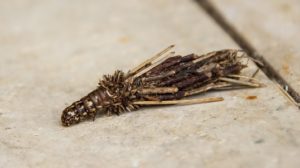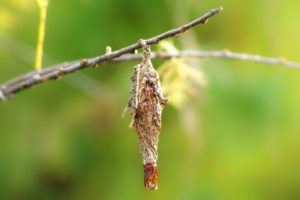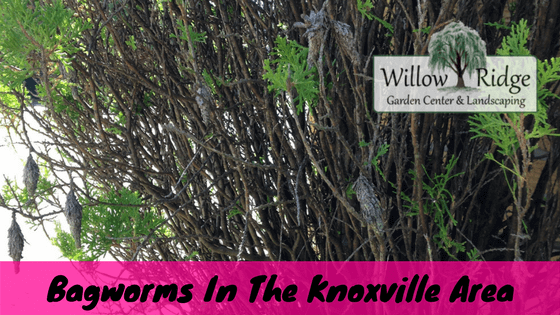Bagworms in the Greater Knoxville Area
Bagworms are the larvae of a moth. Their “bag” is constructed of bits of plant material that the worm is feeding on. The bag is carried wherever the worm goes. When threatened or disturbed the bagworm simply pulls its head back into the bag for protection.
Bagworms feed on the foliage or leaves of plants. They especially like evergreens such as juniper, cedar, or arborvitae, but can also be found on many varieties of shade trees and ornamental shrubs. These hungry little worms can do severe damage to trees and shrubs if they are not detected early. High populations of bagworms can completely defoliate trees and shrubs.
Bagworm Life Cycle
Knowing the life cycle of the bagworm will help in controlling the pest. The bagworms spend the winter as eggs inside the female’s bag. Since some bags contain only males, those bags will be empty in the winter.
In the Knoxville and Oak Ridge area, the eggs hatch in April and May. As soon as the eggs have hatched the young worms crawl out of the bottom of the bags and start feeding and making their own bag. These young worms are so tiny they can move about easily by walking or even catching a ride using the wind. When they find their host plant their bags are just spun silk and dust particles.
As they start to eat they make their bags larger with twigs, pieces of leaves, bits of bark, and shed skins and excrement. Because their “home” is made out of plant material they are perfectly camouflaged. These bags are also water repellent. Being hard to wet makes it virtually impossible for contact pesticide sprays to penetrate the bag and reach the larvae.

They continue to eat and grow until August. When they are full grown the bags are about 2 ½” to 3” long. Then they stop feeding and firmly attach themselves to a twig with strands of silk.

Now is the time for change. The worm turns into pupa then in about four weeks the male moths come out of their bags. The female moths stay in the bags to mate. After mating the eggs are deposited into the females abdomen before she dies. Those eggs overwinter and the whole process starts again. There is only one generation of bagworms each year. But there could be several hundred eggs in each bag!
So Now How To Get Rid of Them!
Here at Willow Ridge Garden Center in Oak Ridge, Tennessee We think one of the best & easiest ways to control bagworms is to handpick the bags off of the plant. Do this in the fall and winter, or before the eggs hatch in the spring. If your tree or shrub is too tall and you cannot reach all of the bags you may have to use an insecticide.
As mentioned before, contact type insecticides do not work on bagworms. You can use a systemic type insecticide or you can use Thuricide which is a bacterial type insecticide. Both of the types of controls must be done when the larvae are actively feeding (May through August). Always read the label on any chemical that you are using.
If you have any questions about Bagworms in the Knoxville or Oak Ridge area, please call Willow Ridge Garden Center at 865-481-3825.
Here’s a video with more information on Bagworms
If you need to apply Insecticides, watch this video on the Ortho Dial-N-Spray

